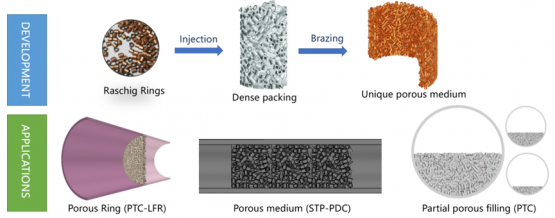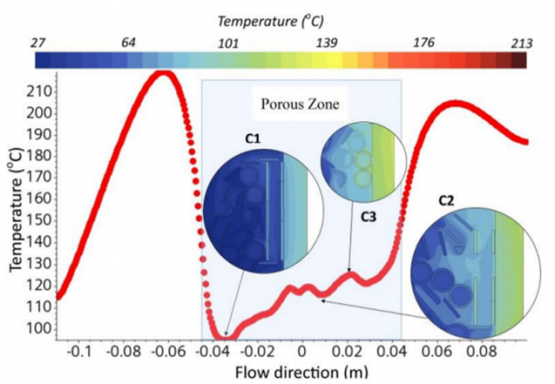Highly efficient tubular absorbers using Raschig Ring porous matrix
Activity carried out by: Hossein Ebadi, Laura Savoldi
Porous media and materials have shown promising effects on thermal efficiency augmentation with increasing heat-transfer area, boosting thermal conduction, and improving convective heat transfer coefficient within the fluid flow regimes. Although several models have been proposed by researchers so far, there is not a suitable solution for current solar power plants due to the significant pressure drop that formed through this medium. However, recently a novel porous medium including Raschig Rings has shown considerable potential to be used as the medium for turbulence promotion avoiding detrimental effects on fluid pressure [1]. This opens new windows for future studies, especially in applications such as solar power plants, where increasing the performance factor must be compromised with the pressure drop. As a result, this study aims to investigate the application of such medium under one-side heating (solar receivers’ conditions) from various aspects and develop the most optimum design based on the experimental data

Figure 1. Development and different applications of Raschig Ring porous medium for solar tubular absorbers.

Figure 2. The cooling effects imposed by the porous insert on the absorber wall temperature.
References:
[1] L. Savoldi, A. Allio, A. Bovento, M. Cantone, J. Fernandez Reche, "Experimental and numerical investigation of a porous receiver equipped with Raschig Rings for CSP applications", Sol. Energy.
Related papers:
- Ebadi, H, Allio, A, Cammi, A, Savoldi, L. "First Numerical Evaluation of the Thermal Performance of a Tubular Receiver Equipped With Raschig Rings for CSP Applications." Proceedings of the ASME 2021 Power Conference. ASME 2021 Power Conference.
- H Ebadi, A Cammi, L Savoldi, “Improving the overall thermal performance of parabolic trough solar collectors using porous media.” Renewable Energy & Power Quality Journal. 2021.

